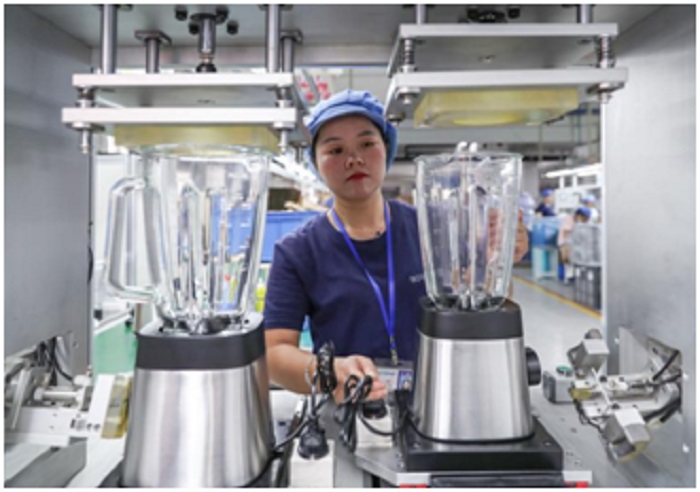



This might be how a day of many Chinese goes at home: sipping a cup of coffee made by a coffee maker while enjoying convenient breakfast cooked by a sandwich maker in the morning; frying chicken nuggets with an air fryer and juicing fruits for lunch; and telling a robot vacuum to clean the rooms before sleep at night.
Small appliances are entering millions of Chinese households and offering them great convenience in life.
According to a recent report released by China Center for Information Industry Development, the sales of small appliances experienced continuous growth in the first three quarters of this year. The growth of air fryers and coffee makers remained above 30 percent.
Besides, export of small appliances also went high. Statistics released by China’s General Administration of Customs indicated that the export of bread machines and juice extractors went up 34.7 percent and 12.1 percent, respectively, in the first half of this year.
Some attribute the rise of small appliances to stay-at-home economy. After the outbreak of COVID-19, people have been spending more time at home, which led to an increasing dependence on home appliances and a surging demand for relevant products. However, to dig deeper, the hot sales of small appliances is a result of the efforts made on both the supply and demand sides, which demonstrates the restructuring of China’s home appliance market.
On the supply side, small appliances have a number of niche markets, and these products are mostly cheap and flexible. Besides, many enterprises have promoted their products online to drive their sales. On the demand side, small appliances can make life more convenient, so kitchen gadgets and electronics, as well as health care devices are very popular among the customers. Behind the booming sales are the market opportunities brought by China’s consumption upgrade.
The prospering small appliance market is an inspiration for China’s high-quality economic development. China is currently going through a critical period of the supply side structural reform, during which oversupply is prevalent in many traditional manufacturing sectors. Therefore, to lead and create new demands with innovation and high-quality supply is a major driving force for market growth.
As market demands are further subdivided and consumption upgrading further accelerated, products that are differentiated and can strike the demands of consumers and improve people’s experiences will be more and more chased. The changes made to adapt to the consumer end will open up new space for traditional manufacturing and lead a way for industrial transformation.
It’s important to see that technological innovation is of vital importance for long-time occupancy of the market. When products are becoming increasingly homogeneous and businesses follow suit, to make products that address the demands of the customers is a key move for enterprises to win the competition. The emergence of smart water boilers that can monitor water quality, as well as multifunctional intelligent tea machines is a reminder for enterprises to precisely grasp the demands of the market.
Entering a new phase of development, enterprises must make efforts to expand domestic demands, eye on the optimization of supply on the demand side, work on core technologies and continue technological innovation, so as to give more competitiveness to their products and take the initiative in competition.


Cooperation between China and Nigeria had.



Nigerian government has urged trainees of.



Minister of State for Foreign Affairs,.


The Nigerian Government has congratulated the.


The Humanitarian Service Diamond Awards has.
A Chinese Company, Inner Galaxy Steel.


The Programme Coordinator, Regulatory, Compliance and.


A Non-Governmental Organization (NGO), Committee for.
The Trustfund Pensions Limited has chided.


The House of Representatives Committee on.
Leave a Comment